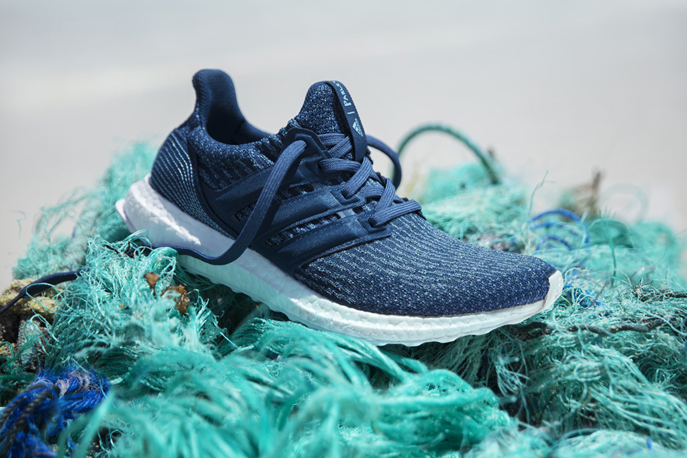Comment: Cate Lamb, head of water risk at CDP, says with only 10% of fashion firms showing awareness of their environmental impacts, the sector urgently needs a redesign
Fashion capitals London and New York recently held their biannual fashion week, albeit in a virtual format due to Covid-19. Along with the latest designs and haute couture, the industry’s environmental impact is increasingly being scrutinised, with water use and pollution of particular concern.
From agricultural pesticides to toxic dyes and microplastics, the fashion and textiles industry has long been known to be a major polluter of water, using 79 billion cubic metres of water in 2015 alone – the equivalent of 10% of all industrial use. Globally, the UN estimates that 80-90% of wastewater is returned to the environment untreated.
CDP’s new report Interwoven Risks, Untapped Opportunities, revealed that out of a pool of 136 fashion and textile companies, fewer than half (62) provided data to CDP on their water impacts when specifically requested to do so by their customers and investors, and less than a quarter of these are currently setting goals to reduce water pollution.
This low level of transparency and ambition is concerning, especially since, along with the environmental damage caused, fashion companies face material risks from water pollution – such as regulatory penalties and damaged brand image.
The fashion industry is known for changing fast, and this needs to happen when it comes to water pollution
It’s alarming that the sector continues to turn a blind eye to such a vital issue. With our research finding that only one in 10 top fashion companies – including Gap Inc, H&M, Inditex, Burberry and Kering Group – show awareness of water pollution across their whole value chain, the sector is leaving itself open to worsening water risks from this ‘invisible crisis’.
Public concern about plastic waste hit an all-time high in 2019. Yet out of the 62 fashion companies that provided us with information, H&M is the only company that mentioned microplastics or microfibres, despite textile production being widely responsible for their release into the environment. In fact, washing just 1 kilogram of synthetic garments can release between 640,000–1,500,000 microfibres, and the washing of synthetic textiles accounts for 35% of all microplastics released globally, causing damage to aquatic ecosystems and even accumulating in human body tissue.
And we now know natural fibres that have been coated in chemicals during textile manufacturing are also a major contributor to microfibre pollution.

The release of microfibres from textiles is the biggest contributor to the crisis of plastic pollution choking our oceans, and few companies are taking action on this issue. And with the rapid rise of fast fashion, the problem looks set to continue if companies don’t change course.
The fashion industry is known for changing fast, and this needs to happen when it comes to water pollution.
Only a third of the 62 companies that provided us with data (29%) were able to calculate the financial value of business opportunities from reducing water pollution. However, this alone totalled $184 million per year.
The financial rewards associated with tackling water pollution are underestimated and under-reported
This demonstrates that the financial rewards associated with tackling water pollution are underestimated and under-reported – but are there to be seized by forward-thinking companies.
What’s more, a McKinsey survey recently identified that 66% of US consumers now consider sustainability when making a luxury purchase, with younger generations increasingly stating that they are willing to pay more for products that have a proven minimised environmental impact.
Moving towards a circular economy with eco-design and sustainable sourcing at its heart is the direction of travel, but our research found that only 10% of fashion companies have identified business opportunities relating to the improved use of recycled materials.

But some leading companies are taking action and reaping the rewards. For example, luxury fashion group Burberry has increased its resilience to water-scarcity induced cotton price fluctuations through procurement of recycled cotton.
Meanwhile on the high-street, Gap Inc reports that product teams are selecting materials based on water quality impacts and potential for circularity. Likewise, Adidas’s investments in recycled polyester have enabled it to position itself as a leader in innovation, and better face future water-related challenges and risks.
Water security is a business-critical issue for the fashion industry, and companies must recognise its value across their value chains.
Circular thinking needs to be embedded within each company, with a focus not only on reducing water consumption and pollution in manufacturing operations, but also in raw material production and product water use in people’s homes.
As the global economy shifts and looks towards a post-Covid world, we have an obligation to build back better. The fashion industry must look to re-design its image and its impact.

Cate Lamb is Global Director of Water Security at CDP
This article is part of our in-depth Water Risk briefing. See also:
Running dry: Competing for water on a thirsty planet
Connecting the drops in the battle against climate change
Finance firms come together in bid to overcome barriers to banking on biodiversity
Mining firms ‘failing to get to grips with worsening water security crisis’
Scorched earth strategies: how Cargill, Unilever and Diageo are cutting their water footprints
Working to protect Earth’s most precious raw material
From 500 litres of water a day to 50: P&G heads up a partnership to stave off next Day Zero
The Gulf companies innovating to reduce dependence on desalination
fashion industry microplastics CDP textiles water pollution H&M Burberry Gap Inc Adidas Kering Group


